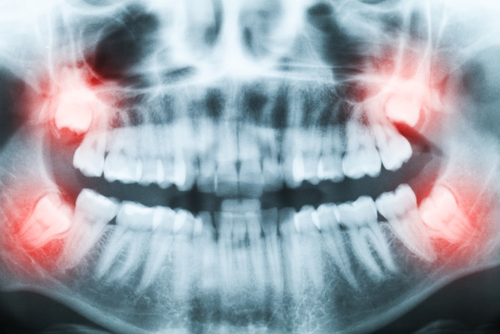Tooth Extraction in Huntsville, AL
In dentistry, preserving the natural tooth is always the priority. However, there are instances where a tooth is so damaged or infected that the most effective solution is extraction. Commonly known as “pulling” a tooth, this process involves removing the tooth entirely from its socket. This creates a space that an implant-supported crown or dental bridge can fill. Wisdom tooth extraction is particularly common, as they often create spacing issues as they develop. Studies estimate that about 50% of adults have had this procedure by age 25, and 70% by age 60.
When Is a Tooth Extraction Necessary?
 Sometimes, even the most comprehensive restorative procedures can’t save a tooth. Dr. Calyton may recommend a tooth extraction in cases of:
Sometimes, even the most comprehensive restorative procedures can’t save a tooth. Dr. Calyton may recommend a tooth extraction in cases of:
- Broken or fractured teeth
- Severe tooth decay
- Impacted teeth that have not broken through the gums
- Overcrowded teeth
- Advanced gum disease (periodontitis)
- Extensive dental trauma
Types of Tooth Extractions
Tooth extractions fall into two main categories: simple and surgical. The type of procedure you need will depend on the tooth’s visibility and accessibility.
Simple Extraction
We perform simple extractions when the tooth is easily accessible and visible above the gumline. Dr. Clayton ensures a pain-free experience by administering a local anesthetic to numb the area. Using special dental tools, she’ll then gently loosen and remove the tooth from its socket. Finally, she may place stitches or immediately place a mini dental implant to replace the tooth.
Surgical Extraction
You may need a surgical extraction if your tooth is below the gumline or otherwise inaccessible. Due to the procedure’s more invasive nature, a surgical extraction may be performed while the patient is under general anesthesia. In more intricate surgical cases, we may refer patients to a specialist.
The Tooth Extraction Process
The process begins with a free consultation, where Dr. Clayton will examine your teeth and take digital X-rays. Once we determine the best course of action, we’ll discuss financial options and provide pre-procedure guidelines.
During the procedure, Dr. Clayton will start by administering a local anesthetic to ensure your comfort throughout the extraction. Next, she will use dental tools called an elevator and forceps to gently loosen your tooth and lift it from its socket. After removing the tooth, Dr. Clayton will clean and disinfect the empty socket, applying gauze to the area. This helps form a blood clot, an essential part of the healing process.
Some patients may decide to replace their missing tooth immediately following its removal. A mini dental implant offers a minimally invasive and efficient solution, ensuring a faster restoration of both function and aesthetics. By placing a mini implant into the socket and attaching an artificial crown, you can experience a smoother transition to a complete smile.
Aftercare and Recovery
After a tooth extraction, it is common to experience some swelling, discomfort, and minor bleeding within the first 24 hours. Applying ice packs and taking over-the-counter pain relievers can be effective in managing pain. Dr. Clayton will provide comprehensive aftercare instructions to facilitate a smooth recovery. These instructions will include measures to protect the blood clot that forms in the tooth socket, which is essential for proper healing. Disturbing this clot can lead to a painful condition known as a dry socket. To prevent this, please avoid using a straw, engaging in strenuous physical activities, smoking, or consuming alcohol until deemed safe.
By diligently adhering to the aftercare guidelines, most patients typically resume their normal routines within a few days to a week. However, complete healing of the jawbone may take several months.
Is a Tooth Extraction Right For You?
Determining whether a tooth extraction is needed requires careful consideration and expert advice. Under the guidance of Dr. Clayton, our experienced team at Chase Family Dentistry will evaluate your dental condition with precision and prepare you for your procedure. We are committed to ensuring you feel comfortable throughout the process.
Consider scheduling a free consultation today to explore whether tooth extraction is the appropriate course of action for your dental health.
Frequently Asked Questions
The extraction procedure at Chase Family Dentistry, performed under the skilled care of Dr. Clayton and with the aid of local anesthesia, is designed to be painless. While some discomfort may follow the procedure, it typically subsides within a day or two. You will receive detailed instructions on dietary choices and care practices to prevent dislodging the blood clot, a crucial step in avoiding the discomfort associated with a dry socket.
Dr. Clayton will provide tailored aftercare instructions, including dietary guidelines post-extraction. Generally, it is advisable to consume soft foods for the first 24-48 hours and to avoid chewing near the extraction site.
No, not everyone will need their wisdom teeth removed. Even though some consider it a rite of passage, you only need your wisdom teeth extracted if their emergence will cause complications. Taking digital X-rays will help Dr. Clayton determine which teeth, if any, need to be removed.
